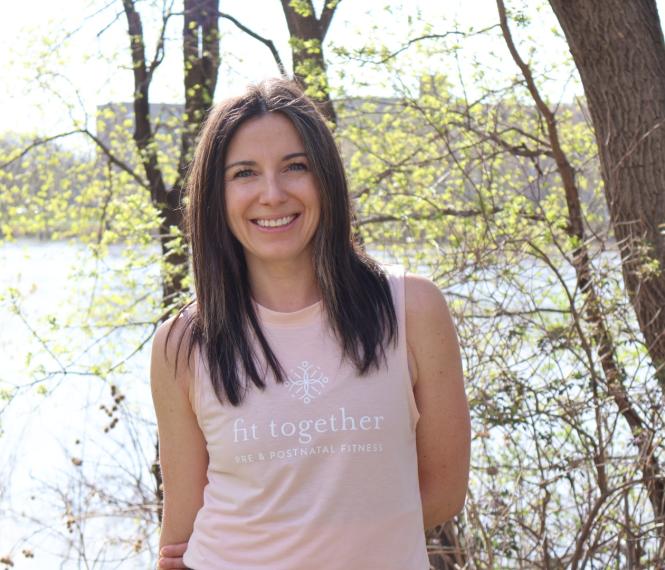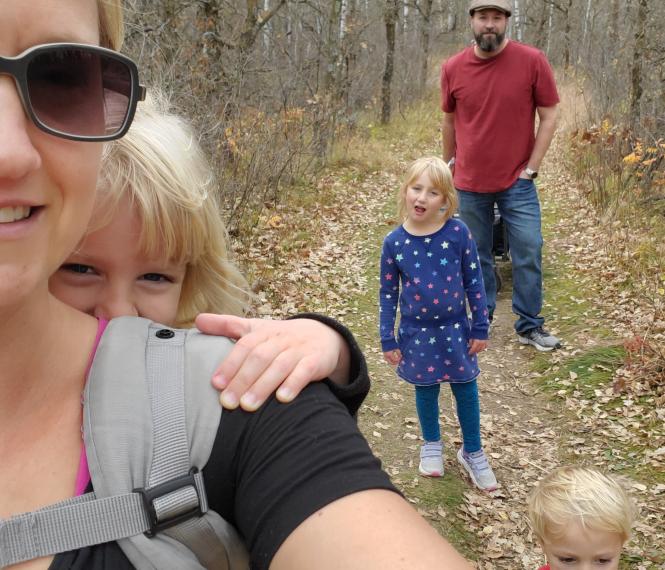Choosing a Toddler Bike Carrier
It’s been a slow and perhaps not-so-steady race, but spring– and bike season – is finally upon us. If baby is going to be 12 months or older this season, you may be starting to think about how to tote them along on your family bike adventures.
Depending on the size and age of your child (or children) and your own personal preferences, there are few common styles that could work for you and family. The list below is not inclusive of every style on the market, but rather a more in-depth look at some of the typical ones our participants and instructors have used.
Option A: Bike Trailer
You’ve likely seen these out and about on the road. The bike trailer attaches to the back of a bike, pulling the child behind. They come in single or double sizes and often come with the capability of converting to a stroller (some even have a ski attachment option). The most recognizable brand out there is Thule (formerly Chariot) but there are other options out there if you’re after something more budget friendly.
Pros: These are great if you are hauling more than just kids around as there is usually some storage space for diaper bags and other personal items. Your toddler is strapped in and cozy so catching a nap is possible. Since they often convert into a stroller, if you’re arriving at a destination, there is no need to disrupt or transfer them. Trailers will most often have a screen or covering of some kind, so there is protection from the elements. They nicely accommodate all sizes of children and if you have more than one kiddo, there are options for double trailers.
Cons: First and foremost, the trailers do not always come cheap and adding options (like converting to a stroller or adding skis in winter) generally means adding to the cost. There is a decent re-sale market on these so it’s worth noting that you can always shop pre-loved or sell yours once you’re done with it. Unless they’re on a bike, they don’t travel particularly well as they’re quite bulky, even when collapsed. It can also be difficult to know if your child needs you as they are behind you and you may not be able to hear or see them very well.
Popular models: Thule Chariot and Burley for multi-sport use ($400-1200 ++). Other brands are generally bike/walk only.
Option B: Rear-Mounted Child Seat
The other most common system you’ll see out there is the rear-mounted seat. Just as it sounds – this seat attaches to the back of the bike, just behind the rider’s seat. There are lots of options on the market, ranging from $100 to $400. Read reviews, ask around and keep in mind, paying more does not always mean better.
Pros: With a less expensive price tag and less bulk, this is a great option. The seats typically hold children up to 40 lbs. so for the average family this is a solution that can last a couple of years. Your toddler will be able to see a lot more from up in the seat than down in a trailer, so if you have a more “active” child, this could be a great option. Child is close, so you can hear them if they need you.
Cons: Child sits directly behind you so it is hard for your to see them and difficult for them to hear you. If you have any gear to bring and don’t have saddlebags, it can be a little awkward and depending on the style you may not have enough space between you and your child to have a backpack on. Napping – though it has in our experience happened – is not ideal. Mounted seats offer no protection from the elements.
Popular models: Thule Next or Ride Along (around $350).
Option C: Front-Mounted Child Seat
The front-mounted seat is a little newer option in the market. It works similar to the rear-seat but instead of being mounted behind, the child sits in-between the rider and the handlebars.
Pros: Parents love being able to be close to and interact with their young toddlers. Toddlers themselves get the full biking experience – wind in the face, seeing the world head on! With toddler right under you they can easily communicate their needs to you and you’ll have room to wear a backpack with your extra gear.
Cons: Front-mounted seats usually only hold up to 30 lbs. so you may not get as many rides out of the seat and for taller toddlers they could outgrow it even sooner. Not all parents feel comfortable in this riding position and depending on the model, you may have to slightly alter the way you ride or for some people, this positioning just doesn’t work at all. Similar to the rear-mounted seat, there is very little protection from sun, wind or rain (except whatever coverage your own body offers them).
Popular models: BoBikeGo Mini from Plain Bicycle, Thule Yepp from bike stores.
No matter what option you and your family choose, remember to purchase a bike helmet for your child along with it. In Manitoba, traffic law states that children under 16 years-old must wear a helmet (even those in the trailer). If you opt for the trailer style, we recommend helmets that are flatter in the back (think similar to a multi-sport helmet). And if you (or your partner) don’t have a helmet for yourself yet – we strongly encourage you to get one at the same time. Our children are always watching!
Happy Riding,
Aileen and Ashley
PS want to get comfortable and have some fun biking with a supportive group of parents and tots? Join us for Family Bike Adventure Club, Saturday mornings this spring! Or come for an evening out, kid-free at out After Hours Bike Club. Family Bike Club. After Hours Bike Club.


